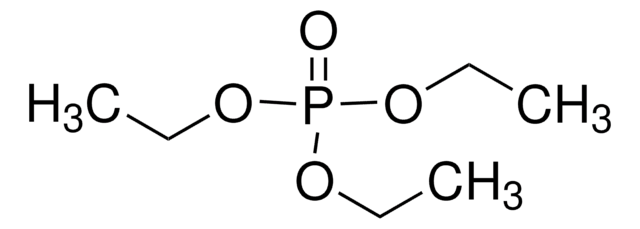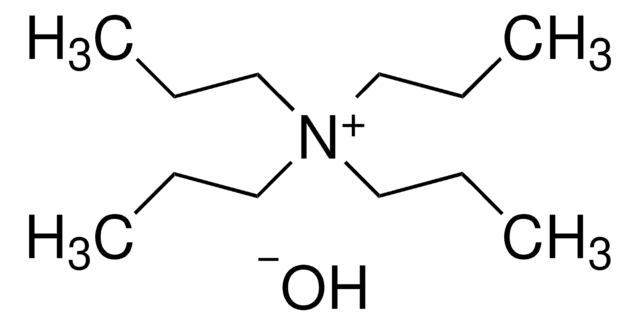759414
Tetraethyl orthosilicate
packaged for use in deposition systems
Synonym(s):
Tetraethyl orthosilicate, Orthosilicic acid tetraethyl ester, Silicon tetraethoxide, Tetraethoxysilane, Tetraethoxysilicon(IV), Tetraethyl silicate, TEOS
About This Item
Recommended Products
vapor density
7.2 (vs air)
vapor pressure
<1 mmHg ( 20 °C)
Assay
≥99.5% (GC)
form
liquid
refractive index
n20/D 1.382 (lit.)
bp
168 °C (lit.)
density
0.933 g/mL at 20 °C (lit.)
SMILES string
CCO[Si](OCC)(OCC)OCC
InChI
1S/C8H20O4Si/c1-5-9-13(10-6-2,11-7-3)12-8-4/h5-8H2,1-4H3
InChI key
BOTDANWDWHJENH-UHFFFAOYSA-N
Looking for similar products? Visit Product Comparison Guide
Application
- Si oxide
- Oxycarbide
- Doped silicate
- Silanol
- Siloxane polymer
- Organosilicon thin films
The films can be deposited at low temperatues (<250 °C). TEOS is also used to deposit mesoporous and nanoporous thin films of silica. These porous films can be doped during deposition to further enhance their properties.
Signal Word
Warning
Hazard Statements
Precautionary Statements
Hazard Classifications
Acute Tox. 4 Inhalation - Eye Irrit. 2 - Flam. Liq. 3 - STOT SE 3
Target Organs
Respiratory system
Storage Class Code
3 - Flammable liquids
WGK
WGK 1
Flash Point(F)
113.0 °F - closed cup
Flash Point(C)
45 °C - closed cup
Choose from one of the most recent versions:
Certificates of Analysis (COA)
Don't see the Right Version?
If you require a particular version, you can look up a specific certificate by the Lot or Batch number.
Already Own This Product?
Find documentation for the products that you have recently purchased in the Document Library.
Our team of scientists has experience in all areas of research including Life Science, Material Science, Chemical Synthesis, Chromatography, Analytical and many others.
Contact Technical Service








